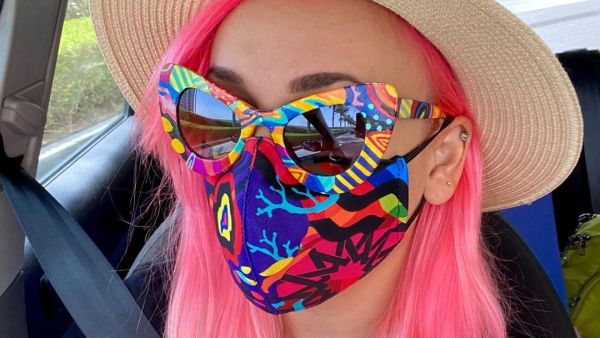The Dubai-based Syrian street artist discusses painting on a devalued Syrian banknote, a work recently showcased at Rome’s Rosso20sette gallery.
My earliest memory of the 500 (Syrian pounds) banknote is when my mom trusted me with it to go to a shop to buy a few things, which made me feel proud.
I remember coming back with multiple bags of stuff, like pomegranates and vegetables. It’s an iconic banknote. If someone gave you a 500, they were spoiling you — it was a treasure. Now, 500 pounds won’t get you anything. I don’t think you could even buy one pomegranate with it.
Meet Dubai-based street artist Dina Saadi! She is adding a little (okay, a lot) of color to the streets of Dubai with her art work which can now be seen around the world with the release of Aldo’s Dubai trainer designed by Saadi. https://t.co/uN3lXUW8uV pic.twitter.com/7FqxYyA0gF
— AMIDEAST (@AMIDEASThq) November 30, 2019
The Rosso20sette gallery contacted me to participate in its group exhibition, “Money Go Round,” in which each artist painted any banknote. As a street artist, it was actually a challenging piece for me. I used a really tiny brush with normal acrylic and acrylic markers; it’s the smallest piece I’ve ever done in my life.
Of course, I chose Syrian money. I didn’t have any on me, but my dad was visiting Syria and he brought me some old notes.
I painted the 500 and the pomegranate — which was already on the note — because I have that personal relationship with it. I felt like the splash of color almost revived the banknote. It also reflects good memories — the nostalgia that I feel for that note. Growing up in Syria, there was a lot of vibrancy, contrast and greenery. We have a beautiful culture; it’s very colorful and I think that is reflected in the banknote. I was also looking into the relationship between people and money in this piece.
“The Butterfly Hug” ?#StreetArt by Dina Saadi
— Sunny (@Ginger_ajm) August 3, 2019
In Long Beach #California pic.twitter.com/pTjTZ8sbr0
I’ve always been inspired by Andy Warhol and the Pop Art movement in general. It was not something I was exposed to in Syria. I was so drawn to it and started using primary colors, which is mostly used in pop art. It gets people’s attention and turns heads. I just like its sense of humor and how shocking it is — it can visually deliver any message in a better way.
This article has been adapted from its original source.








